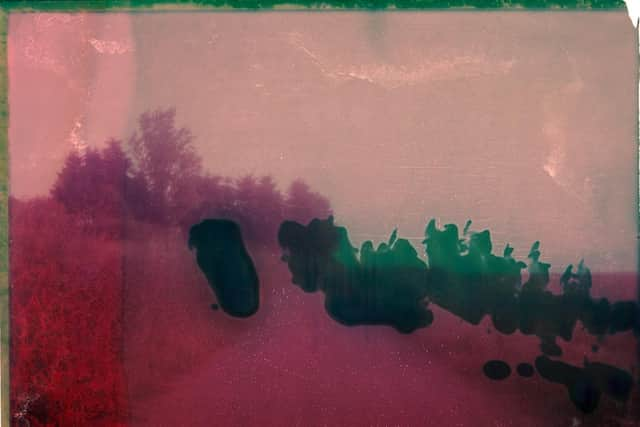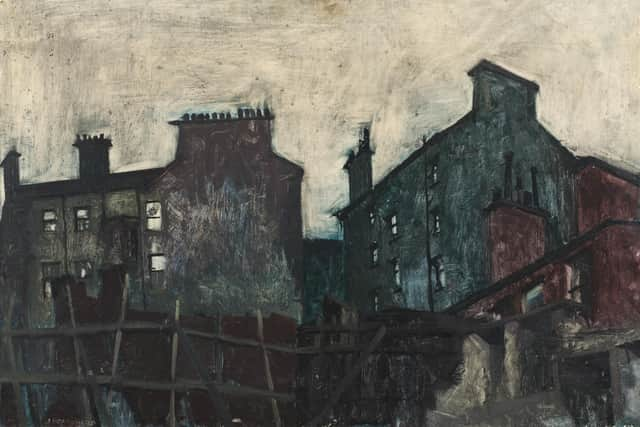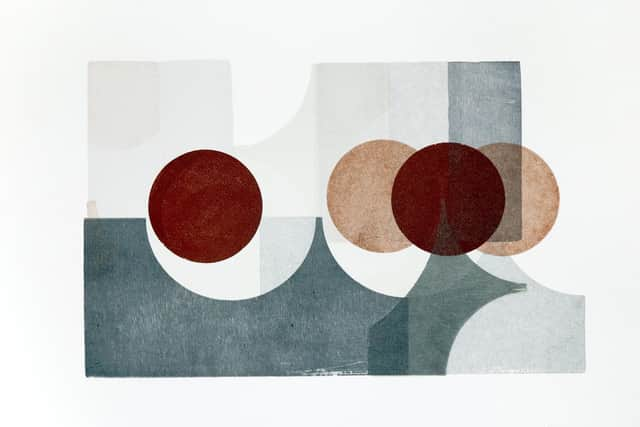Art reviews: DEBUT | James Morrison | We Are Ten | Between the Lines
DEBUT: Inaugural Open, &Gallery, Edinburgh *****
James Morrison: Under a Northern Sky, Scottish Gallery, Edinburgh *****
We Are Ten, Tatha Gallery, Dundee ****


Between the Lines, Royal Scottish Academy, Edinburgh ****
Over the last few years, Dundas Street in Edinburgh has quietly become Scotland’s art quarter. With ten galleries in just two blocks, veteran Greyfriar’s Art Shop there too, and Ingleby Gallery barely more than a block away, it really has critical mass. You would think the city might encourage this valuable asset in Edinburgh’s cultural profile, but no, apparently the rates have recently gone up, not just in general, but additionally, too, to recoup the loss suffered by business rate suspension during the pandemic.
Advertisement
Hide AdThe Fine Art Society, formerly Bourne Fine Art, the Scottish Gallery, the Torrance Gallery and Anthony Woodd have been in Dundas Street for years. It is a long time too since the Open Eye Gallery moved here from Cumberland Street, but others like &Gallery have joined more recently – it was actually seven years ago, but perhaps because of the pandemic, five years still seems recent. The gallery is certainly now a star and it’s current show, DEBUT: Inaugural Open, is the product of a daring and original initiative. The gallery sent out a worldwide invitation to artists to submit work. In response they got nearly a thousand submissions. These submissions, many from far afield, would of course have been impossible without the internet, but because of it and the way the galleries are using it, Dundas Street is now an international address, something else for the city to note.
From the thousand submissions, the gallery selected 47 works by 38 artists. One or two are home-based and familiar, but really they are from all over. Indeed, some artists travelled from France and Spain to be at the opening. (On this point it would have been helpful to have some biographical information on the website instead of the usual, always dubious artists’ statements which are all we are given there.) There was a limit on size for submissions, but not on medium. The result is a delightful show, including painting, sculpture, ceramic and things in between. There is certainly no uniformity overall, but as befits a private gallery, you do feel a guiding taste. Much of the work is exquisite and there does seem to have been a tendency to favour skill and delicacy of execution, certainly nothing jangles or seems out of place.


Josefina Isaza’s ceramics are wonderfully delicate suggesting seashells and the complex structures of coral. The same is true of Charlotte Rodgers two small obelisks somehow created apparently out of foam glass and cobalt oxide. The intense blue of cobalt is certainly striking. Susan Phillips small sculptures made of white porcelain seem almost impossibly delicate. Silvia de Marchi uses ink on small squares of collaged paper to create a surface that almost could be ceramic. Leonieke Kormelink also uses collaged paper, but combines it with stitching to create eloquent compositions in delicate shades of white. Joanna Kessel has made a small, beautiful and jewel-like glass mosaic, while Dennis Konijnenburg’s construction is an elegant riff on de Stijl’s rectangles and simple colours. Susan Simonini’s New Trick is an equally satisfying riff on Paul Klee. Cristina Fontsare uses polaroid negatives in ingenious ways to create strange transfigured landscapes, while Alastair Gordon manages to combine very skilful trompe l’oeil painting with a kind of abstraction. Altogether it’s a fresh and intriguing show and the gallery must be congratulated on their initiative.
Across the road the Scottish Gallery is celebrating the late James Morrison with Under a Northern Sky, an exhibition which, although not billed as a retrospective, does range across the artist’s long career from his beginnings painting dark urban scenes in Glasgow to his emergence as the great painter of the wide, rural landscapes of Angus and Strathmore. He did also range much further afield, however and there are, for instance, fine pictures here of the mountains of the west coast where he regularly travelled to paint.
A painting of Glasgow tenements from 1955 is dark and sombre and echoes the painting of Bernard Buffet, then very fashionable. This suggests how Morrison was already looking for inspiration beyond the prevailing fashion for stark social realism, shared with Joan Eardley and others in Glasgow. When the painter’s wife Dorothy took a teaching post in the north east, the Morrisons moved to Catterline and later to Montrose where she became head of history at Montrose Academy. The move from urban Glasgow to painting the wild east coast was a bit of a shock for Morrison and it took him a while to adjust. Indeed at first he travelled back to Glasgow for his subject matter. His first tentative engagements with the scenery of Angus, however, show him exploring the abstract and semi-abstract painting of contemporary French artists like Nicholas de Stael. Blue Landscape from 1964 seems wholly abstract while in Trees in a Landscape and Fullarton, both from 1966, precise drawing of trees is swept up into broad abstract brushstrokes like those that characterised the paintings of Pierre Soulages.
It seems Morrison was himself always too engaged with his subject matter to follow this fashion for abstraction any further, but he did learn from the freedom of this kind of contemporary painting and, as he engaged with the landscape around him, it served him well. He developed a way of painting on smooth non-absorbent gesso that allowed him to use oil paint with a transparency, freedom and flow more typical of water-based paints. This technique is what gave such breadth to the wide sky he painted in 2000 above the Montrose Basin, for example, in the fields of Angus at Fithie painted in the same year, or indeed above the peaks of Quinag in the north-west painted in 2003. For all this breadth of execution, Morrison’s sense of place, but equally of the differences that weather and season make to it, was very strong. Two superb paintings of fields at Balgrove are dated respectively to precise days in January and November 1990. This gives a sense of his presence in the living landscape. The way that, through him, we share this is a big part of what gives his work such enduring appeal.


Advertisement
Hide AdFurther afield, in Tayport the Tatha Gallery is celebrating its tenth anniversary. In difficult times, survival alone is often occasion enough for congratulation, but the gallery has done better than just survive. Over that decade it has shown the work of a wide range of first-class artists and for the anniversary has brought work by 14 of them together including Kate Downie, Joyce Cairns, Frances Walker and Helen Glassford. Doug Cocker is not only showing a selection of his characteristically elegant reliefs here at Tatha, but also concurrently both at the Scottish Gallery and in Between the Lines, the current show at the Academicians’ Gallery. Dedicated to abstract work by past and present academicians, alongside Cocker’s reliefs, it includes among other things some beautiful painted work by current president Gareth Fisher, stone reliefs by Jake Harvey, a couple of fine paintings on aluminium by academician elect, Toby Paterson, some austere prints by Jo Ganter and, too, typically beautiful work by the late, great Philip Reeves.
DEBUT: Inaugural Open, until 27 April; James Morrison: Under a Northern Sky, until 1 June; We Are Ten until 11 May; Between the Lines, until 5 May